Fun science project for Valentine’s Day! How to make a heart-shaped bubble wand, and encourage some learning about bubble physics with play.
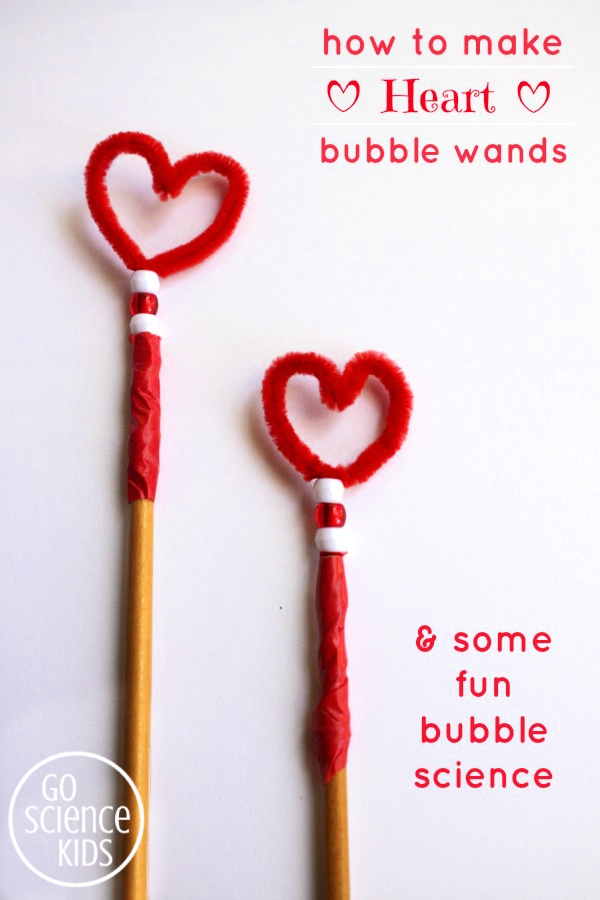
We’ve been having so much fun making bubble wands in different shapes lately, we thought we’d try again, with heart shaped bubble wands this time. Bubble fun!
Suitable for
I’ve yet to meet a child that doesn’t like bubbles! Babies and young toddlers are usually entranced with the bubbles themselves, rather than the implement used to make them, so I recommend this activity is for the preschooler and kindergarten / early primary school age group. Older kids might enjoy making their own versions. Either way, be sure to ask them to predict what shape the bubbles will be, and then let them experiment to find out if their hypothesis was correct!
How to make a Heart Shaped Bubble Wand (or two)
We used:
- 6mm pipe cleaners (also called chenille stems)
- scissors
- chopsticks
- Solid white and transparent red pony beads (optional)
- red tape (optional)
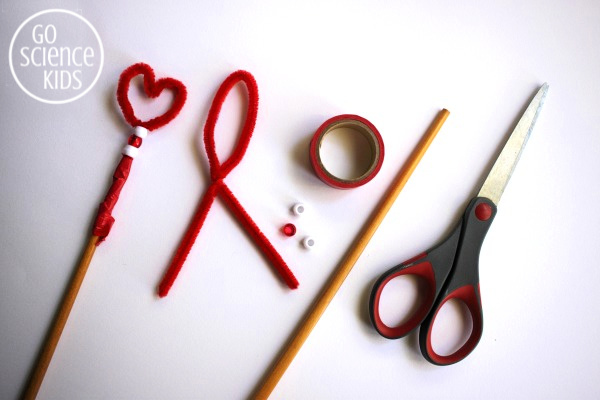
We made two heart bubble wands (because I have two daughters, and life is just easier when there’s once each), but you could make as many as you like. Once you have all your materials ready, it only takes a minute or two to make each one!
I started by creating a loop in one of the pipe cleaners, twisting to create a rough oval, leaving about 2 inches on the ends. I threaded on pony beads (purely for decorative purposes), and then wound the ends of the pipe cleaners tightly around a chopstick to act as a handle.
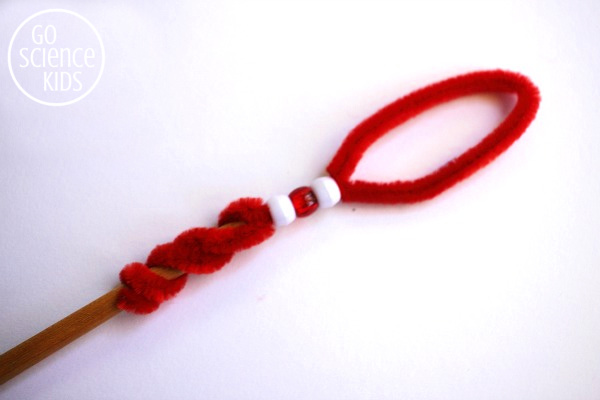
As an optional extra step, I added red tape around the handle to secure the pipe cleaners in place.

(We’ve made pipe cleaner bubble wands without the tape before, and they still work. It just means kids have to be a bit more gentle when waving the wands around, lest the pipe cleaner falls off the chopstick. If it does fall off however, it only takes a second to put it back on…)
And lastly, I bent the oval into a heart shape. And then I started again to make a second one!
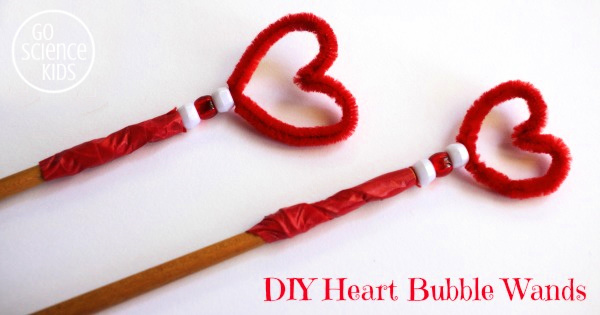
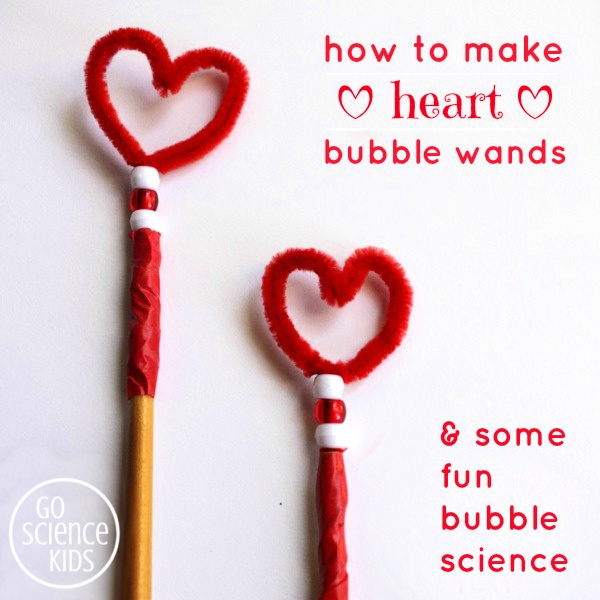
Do they work? Do they create heart shaped bubbles?
That’s the big question! What’s your hypothesis? Now test and see if it’s true!
Fun Bubble Science Facts
Our (store-bought) bubble mix is made up of (mostly) soap and water. The soap makes the surface tension of water weaker than normal, and also forms a very thin skin (or film) that is flexible, perfect for making bubbles.
Bubbles are actually a film of soapy water with air trapped inside. There are two forces occurring here: the air inside the bubble is pushing out, whilst at the same time, the soapy film is pushing in. To balance these forces, the soapy film assumes the smallest surface area it can, and that shape (in the absence of other forces) just happens to be a sphere. Therefore, in the absence of other forces, bubbles that float in air are always round, regardless of the shape of the bubble wand used.
We’d done this experiment before, so Jewel used her prior knowledge to predict the bubbles would come out round, even though our bubble wand is heart shaped. This time however, she experimented with the force of her breath, and worked out that a slow gentle breath will create one or two bigger bubbles, whereas a more powerful fast breath will create a stream of smaller bubbles.
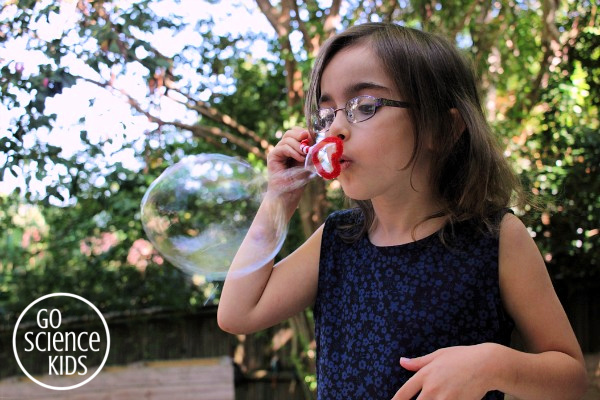
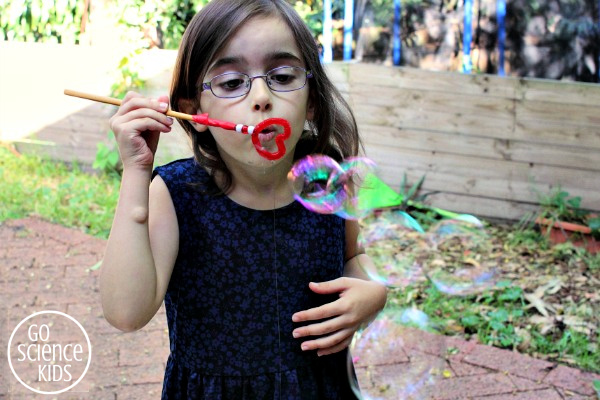
She also thought she would be extra tricky, and see if she could create a heart shaped bubble within the bubble wand itself. And look, she did it!
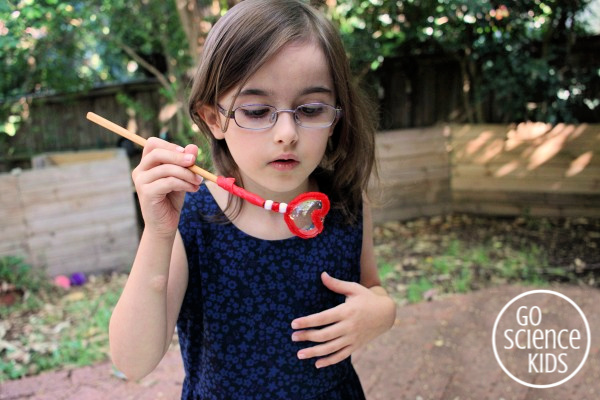

It’s heart shaped on one plane and round on the other – how’s that for awesome!
Jewel is learning that science is fun, you can replicate a science experiment with slightly different variables to test how this changes the results, and bubbles are fun in all sorts of shapes and sizes!
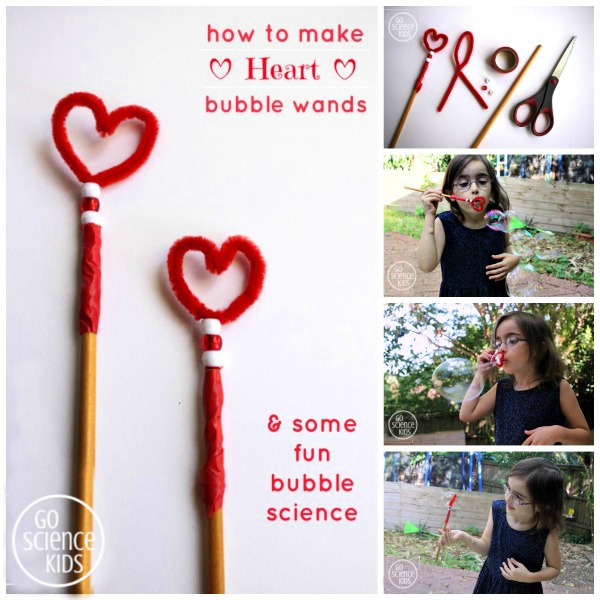
For more bubble science fun, you might like our other bubble science posts. Each post how to make a cool new DIY bubble wand, and you can also see the progression of the girls’ bubble knowledge over time. They’re playing AND they’re learning!
You can find more physics fun on our physics activities for kids page too.
And you might like to follow our Go Science Kids and Fun Science for Kids boards on Pinterest.
And, of course, you can always subscribe to our newsletter, to receive all our latest activities straight in your Inbox. We’d love to have you join us!
* This post contains affiliate link(s) to similar products used. An affiliate link means I may earn a referral fee or commission if you make a purchase through this link, without any extra cost to you. It helps to keep this little project afloat. Thank you for your support.

#